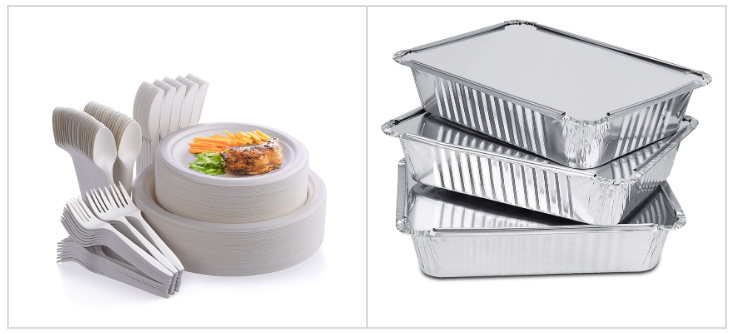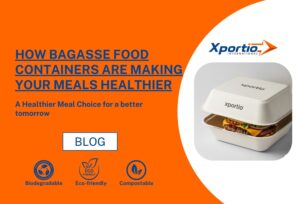Bagasse Disposable Vs Aluminum Top-quality 100% natural
Introduction to Bagasse Disposable
Bagasse disposable products are crafted from the fibrous pulp left behind after juice is extracted from sugarcane. Known as bagasse, this byproduct has long been considered agricultural waste — until innovators began using it as a sustainable packaging material in the early 20th century. With growing environmental concerns, especially regarding plastic waste, bagasse gained popularity for its eco-friendly properties. It’s fully biodegradable and compostable, breaking down naturally in 60–90 days and even enriching the soil.
Unlike plastic or Styrofoam, bagasse disposable doesn’t release harmful chemicals and is safe for both people and the planet. Today, bagasse tableware is used globally, especially in food service, hospitality, and retail sectors. According to recent industry data, the global demand for bagasse-based packaging is expected to grow at over 6% annually through 2030, reflecting a strong shift toward greener alternatives. From sturdy plates to takeout boxes, bagasse offers a practical and responsible solution for modern packaging needs.
Introduction to Aluminum Packaging
Introduction to Aluminum Packaging
Aluminum packaging has long been a staple in the food industry, prized for its remarkable combination of strength and lightness. Its natural ability to block out light, oxygen, moisture, and even bacteria makes it a powerful guardian of food freshness, helping products stay flavorful and safe for longer periods. From soft drink cans to foil trays and multi-layered flexible packs, aluminum adapts to a variety of food packaging needs with ease. Beyond its functional benefits, aluminum also holds value in sustainability circles due to its recyclability. While reprocessing aluminum does require significant energy, the material can be recycled indefinitely without losing quality — making it a circular solution when managed responsibly. In a world striving for better packaging choices, aluminum continues to balance convenience, performance, and potential for reuse.
Bagasse Disposable vs. Aluminum: A Detailed Comparison
Bagasse Disposable vs. Aluminum: A Detailed Comparison
Bagasse Disposable
| Aluminum
| Factor Cost
Health Hazard
Environmental Safety
Durability Heat Resistance Recyclability/ Composability |
Range of Products
Range of Products
Bagasse Disposable
Plates
Bowls
Clamshell containers
Trays
Cutlery
Custom molded packaging
Aluminum:
Beverage cans
Foil containers
Flexible packaging (pouches, wraps)
Trays
Lids
Foil wraps
Why Bagasse Disposable is Often a Better Choice
Why Bagasse Disposable is Often a Better Choice
As sustainability becomes a top priority, businesses are turning to smarter packaging options. Bagasse tableware, made from sugarcane fiber left after juice extraction, is emerging as a preferred alternative to plastic and metal packaging. Here’s why it’s gaining popularity:
-
Eco-Friendly Origin: Created from agricultural waste, bagasse is both biodegradable and compostable, returning to the earth without harm.
-
Safe for Food Contact: Unlike some materials that may leach chemicals when heated, bagasse products are food-safe and non-toxic.
-
Supports Brand Image: Businesses using natural, compostable packaging reflect a commitment to the environment — something modern consumers value.
-
Waste Reduction: Using bagasse helps repurpose an existing byproduct, contributing to a circular economy.
Aluminum: Yes or No?
That said, traditional materials like aluminum still have their place:
-
Durability: Aluminum is sturdier and better suited for high-pressure, high-heat, or long-term storage conditions.
-
Barrier Protection: It offers excellent resistance to light, moisture, and oxygen.
However, for restaurants, cafés, caterers, and eco-conscious food brands, bagasse tableware provides an ideal balance of performance and sustainability — reducing plastic waste while meeting everyday packaging needs.
Key Takeaway
Key Takeaway
In today’s world, the demand for sustainable packaging is no longer just a trend — it’s a necessity. While materials like aluminum still serve specific purposes due to their strength and recyclability, they come with a higher environmental cost. On the other hand, packaging made from natural, fast-renewing resources offers a more responsible path forward. Choosing options like bagasse tableware allows businesses to reduce their ecological footprint without compromising on quality or functionality.
It also aligns brands with the values of environmentally conscious consumers, enhancing trust and market appeal. As industries shift toward greener practices, adopting plant-based packaging isn’t just good for the planet — it’s a smart move for long-term brand growth and relevance.


